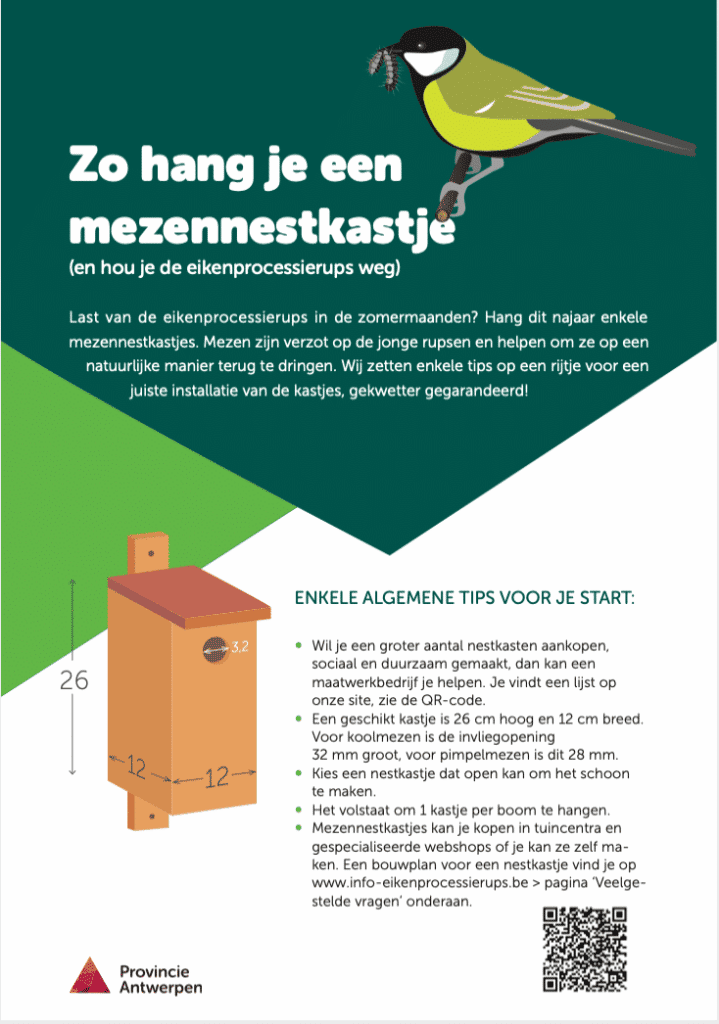LIFE Oak Processionary
Attracting tits as predators
Oak processionary caterpillars as food for tits
Oak processionary caterpillars as food for tits
Great tits eat the oak processionary at all larval stages, as well as the pupa and moths. So, in effect, they eat the oak processionary at every stage of development. During observations of the blue tit, it was only demonstrated that they eat the 1st and 2nd larval stage.
The hairy caterpillars are ‘peeled’ by the tits and then shared out between 8 to 14 chicks. In two weeks, a young tit can eat around 800 caterpillars. Fruit growers realised the support that tits could offer long ago; they hang nesting boxes in order to reduce the damage caused by caterpillars by a quarter.
Small-scale studies have shown that attracting insect-eating birds by means of nesting boxes can help to drastically reduce the population of the oak processionary. There is no clear reduction percentage in terms of the oak processionary as a result of this predation, however.
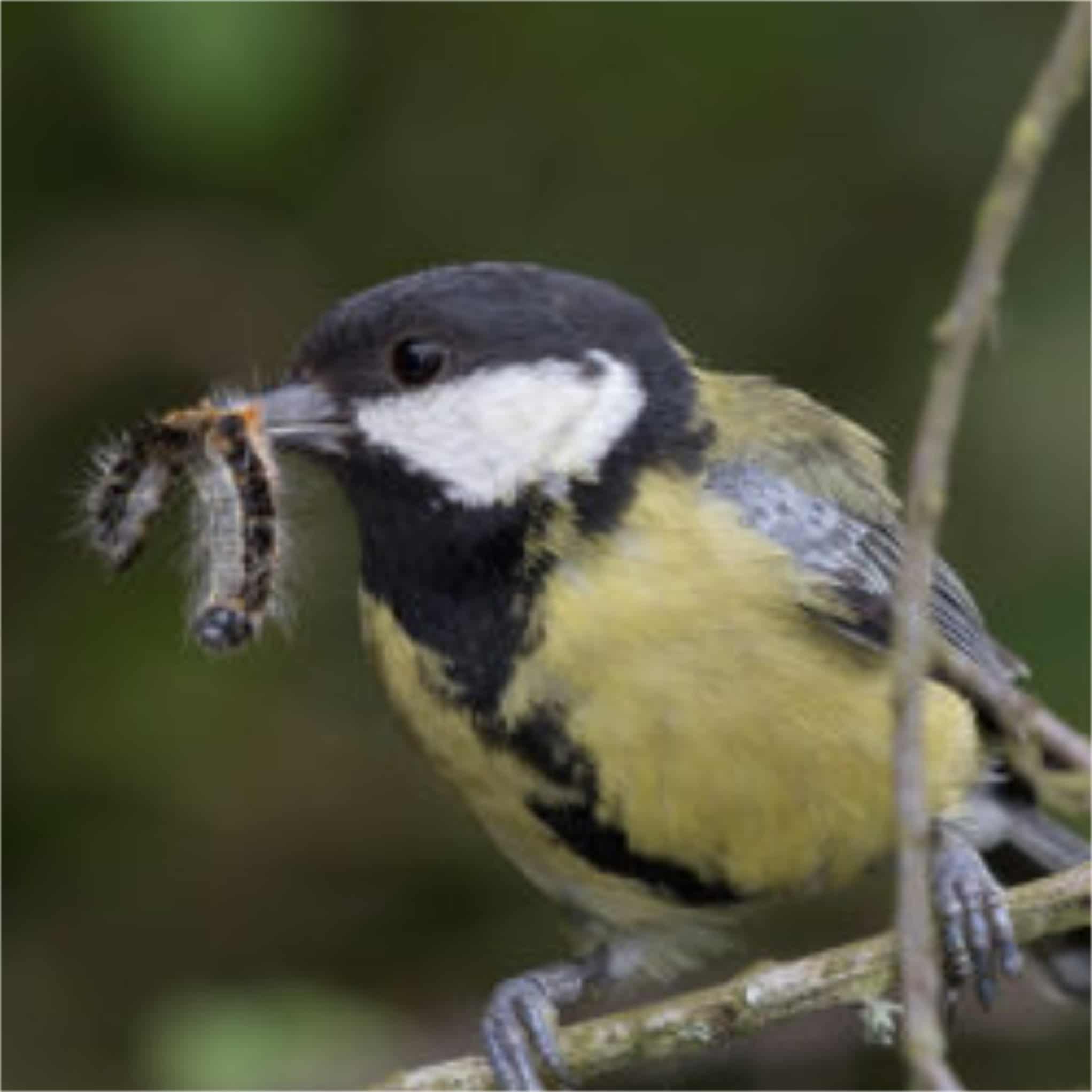
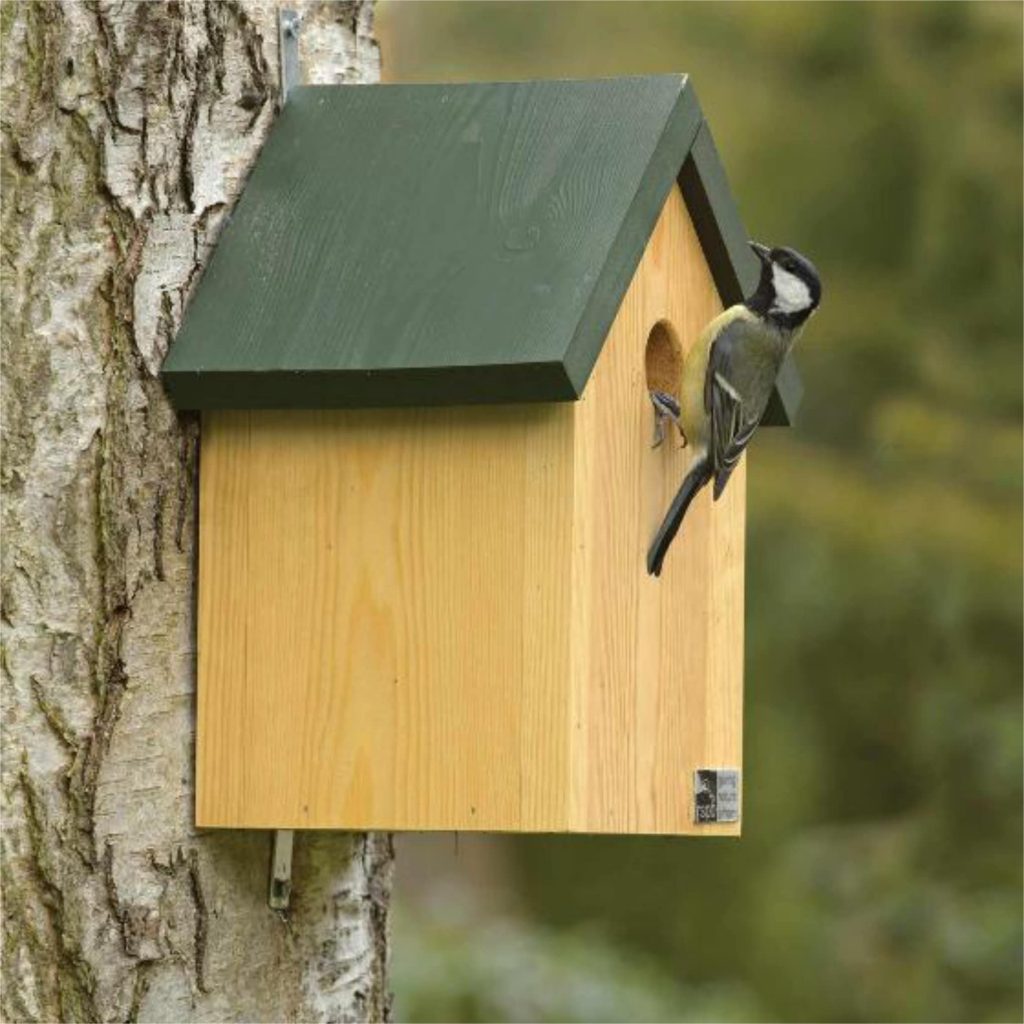
In this LIFE project, we will test and measure the precise impact of installing nesting boxes on the population of the oak processionary (quantities and size of nests) on a large scale. We will then be able to corroborate the effects of this method with figures. A good, experimental structure in which we examine infected trees with nesting boxes compared to trees without nesting boxes, will allow us to assess the effect of these measures.
By taking stakeholders to the trial locations and demonstrating the impact of predation by tits on the numbers and size of caterpillar nests on site, we hope to be able to convince them to use this type of method too.
Experimental set-up
In the provinces of Antwerp (B), Limburg (B), Gelderland (NL) and Noord-Brabant (NL), a trial will involve the installation of 360 nesting boxes. In order to determine the effect of these on the numbers and size of the oak processionary nests, trial locations with nesting boxes will be compared to similar locations without.
Twelve similar trial locations will be selected per province, each comprising a row of 15 large, infected oaks (at least two processionary caterpillar nests per oak). Six of these trial locations per province must serve as a control and will not have any nesting boxes installed while, at the other six locations, a nesting box will be installed in each of the 15 oaks.
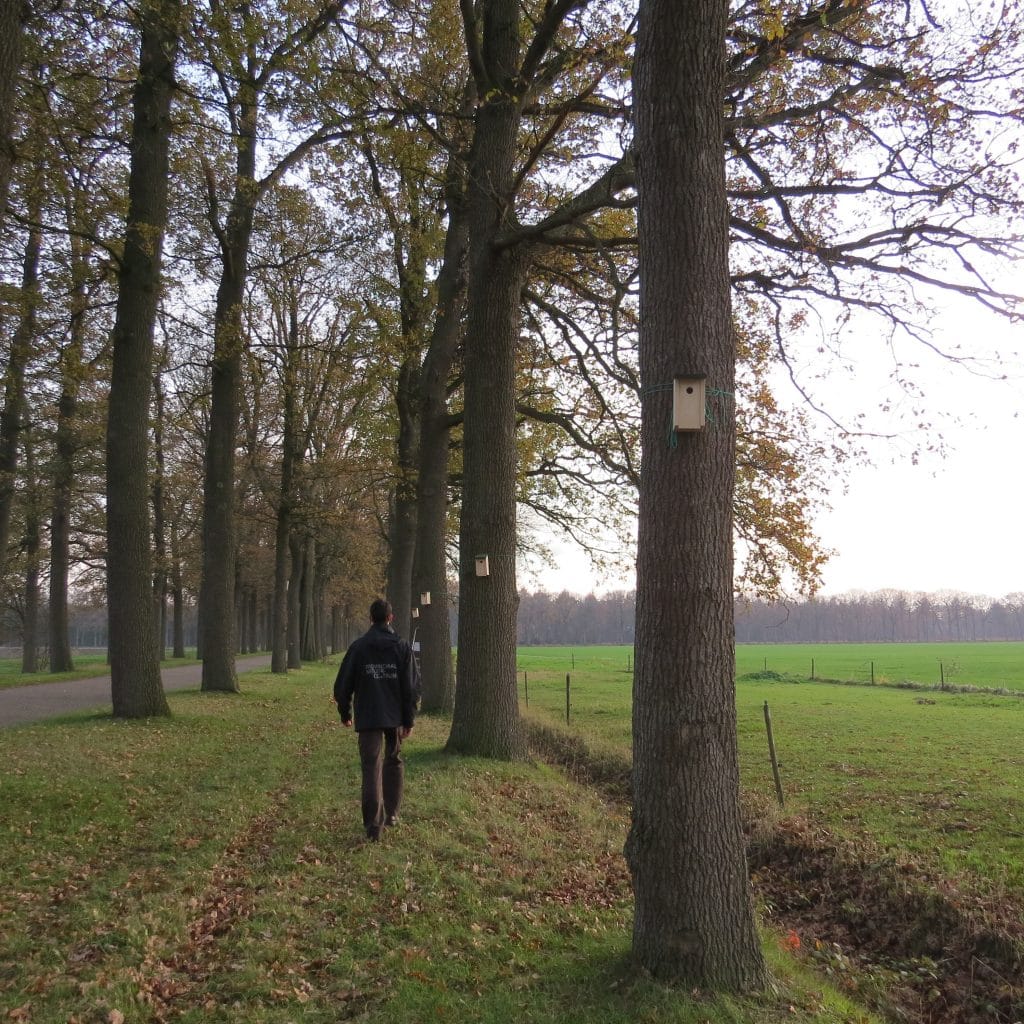
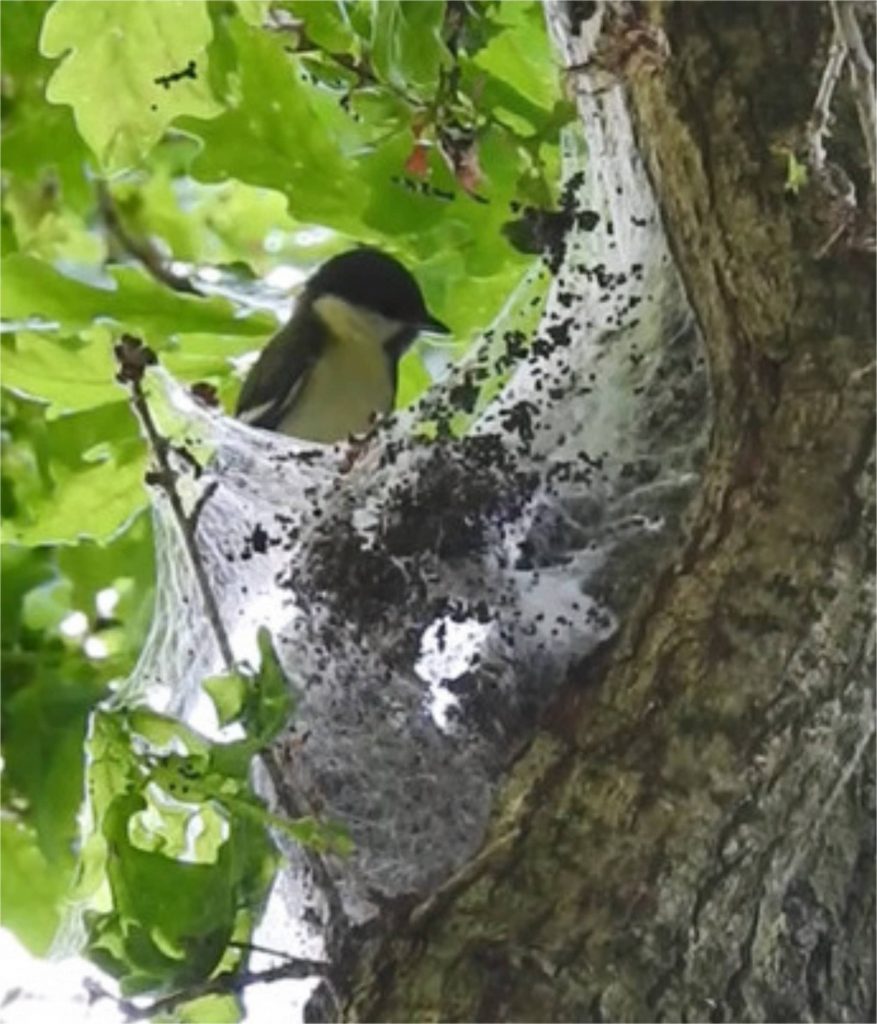
Measurements
In the period April-May, the number of inhabited nesting boxes will be counted, as will the numbers of juvenile tits. In the summer months, both at the control and testing locations, the size and number of oak processionary nests will be evaluated. This will take place first prior to the experiment, to provide a baseline measurement. We will thus be able to check the impact of installing nesting boxes on the numbers of the oak processionary and assess the effectiveness of our method.
Read further:
Hang your own nesting boxes to reduce the nuisance of oak processionary caterpillars.
